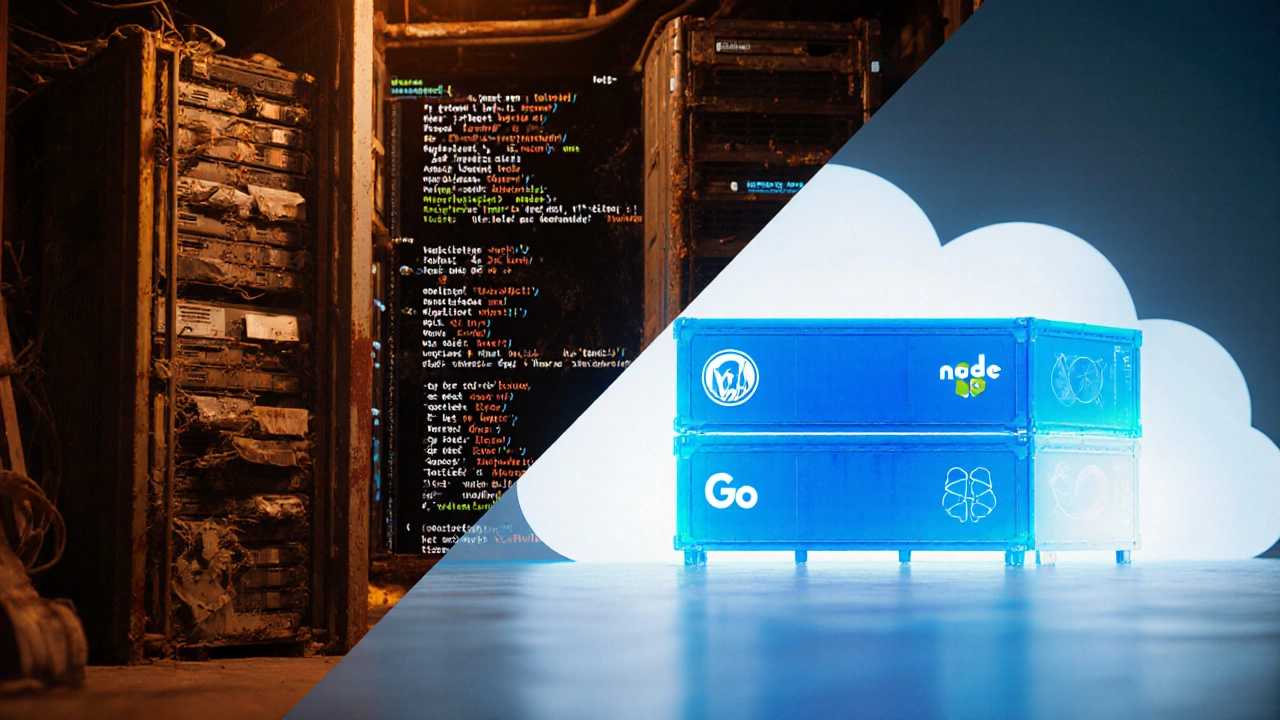PHP Drawbacks – What Every Developer Should Know
When working with PHP, a widely used server‑side scripting language that powers millions of websites. Also known as Hypertext Preprocessor, it executes code on the web server to generate dynamic HTML, you instantly step into the broader world of server‑side scripting, technologies that run on a server to process user requests before sending a response and the everyday practice of web development, building sites and applications that run in browsers. Understanding the PHP drawbacks helps you decide when the language fits and when another tool might serve you better.
Common Issues That Show Up in Real Projects
First, performance. PHP interprets code at runtime, which can add latency compared to compiled languages like Go or Rust. A typical benchmark shows a plain PHP script handling 50‑70 requests per second on modest hardware, while Node.js or Python’s async frameworks often double that number. If your site expects heavy traffic, the extra CPU cycles translate into higher hosting costs. Second, security. Because PHP has been around for over two decades, its legacy functions (e.g., mysql_query) are still found in old codebases. Those functions lack built‑in protection against SQL injection, making vulnerable sites an easy target for attackers. Modern PHP versions patch many issues, but legacy code remains a hidden risk.
Third, code consistency. PHP allows a mix of procedural and object‑oriented styles, which can lead to chaotic projects when teams don’t enforce strict guidelines. One file might use global variables, another might rely on classes with autoloaders. This inconsistency hurts maintainability and makes onboarding new developers harder. Fourth, the ecosystem. While Composer has improved dependency management, many popular PHP packages are abandoned or poorly documented. You might spend weeks hunting for a secure, up‑to‑date library, only to discover the project is no longer maintained. In contrast, ecosystems around Node.js (npm) or Python (pip) often have more active contributors and clearer versioning.
Finally, hosting constraints. Traditional shared hosting environments still favor PHP because of its low entry cost, but those environments restrict access to modern server features such as containerization or server‑less functions. If you need fine‑grained control over the runtime, you’ll end up moving to a VPS or cloud instance, which erodes the cheap‑hosting advantage that originally attracted many developers.
These challenges form a clear semantic chain: PHP drawbacks encompass performance limits, security gaps, maintenance hurdles, and ecosystem fragility. Each drawback requires a mitigation strategy—whether that’s caching, code reviews, or switching to a more modern language. The decision often hinges on project requirements, team expertise, and long‑term support plans.
What about alternatives? Modern server‑side languages like Node.js, a JavaScript runtime that runs on the V8 engine and supports asynchronous I/O and Python, a versatile language with frameworks like Django and FastAPI address many of PHP’s pain points. Node.js offers non‑blocking I/O, which reduces latency for real‑time apps, while Python’s readable syntax and strong data‑science libraries make it a go‑to choice for AI‑enhanced web services. Both ecosystems benefit from robust package managers (npm, pip) and vibrant communities that constantly refresh best practices. Switching to one of these alternatives enables better performance, clearer code structures, and easier scaling.
Even with these options, PHP isn’t dead. It still powers WordPress, Drupal, and countless legacy systems. Knowing the drawbacks helps you balance short‑term convenience against long‑term risk. If you stay with PHP, consider using modern frameworks like Laravel or Symfony, which enforce MVC patterns, include built‑in security features, and rely on Composer for stable dependencies. Coupled with opcode caches like OPcache, you can mitigate many performance concerns.
Below you’ll find a hand‑picked selection of articles that dig deeper into each of these topics—front‑end integration, performance comparisons, security best practices, and migration guides to newer technologies. Browse the list to see concrete examples, step‑by‑step tutorials, and real‑world case studies that illustrate how to handle the challenges discussed above.
Why PHP Is Falling Out of Favor in Modern Web Development
- Jaxon Millwater
- PHP Development
- 0 comment
Explore why PHP loses favor in modern web development, covering performance, security, tooling, hiring trends, and when to consider moving to alternatives.
VIEW MORECategories
- Responsive Web Design (14)
- Tech Careers (13)
- SEO for Web Developers (12)
- UX UI Design (12)
- PHP Development (11)
- Web Development Courses (11)
- JavaScript (9)
- Ecommerce Websites (9)
- Web Development Frameworks (8)
- Full Stack Development (8)
Popular posts
-
Become a Web Developer in 2 Years: A Practical Roadmap
Jaxon Millwater -
Unleashing the Power of PHP for Web Development
Jaxon Millwater -
Should You Learn JavaScript in 2024?
Jaxon Millwater -
Full Stack Developer Salary with 2 Years Experience: What to Expect
Jaxon Millwater -
DIY SEO for Your Website: A Web Developer’s Guide
Jaxon Millwater
